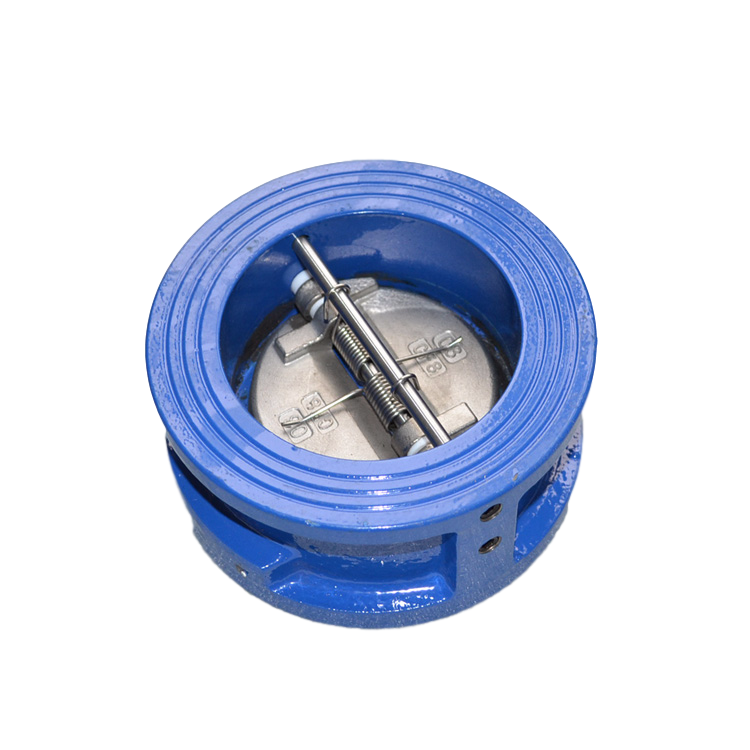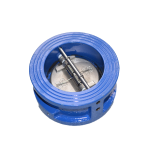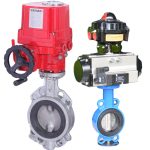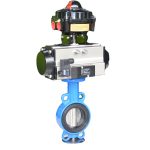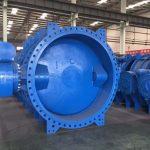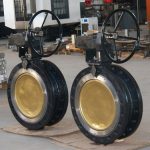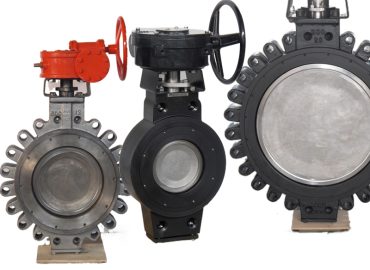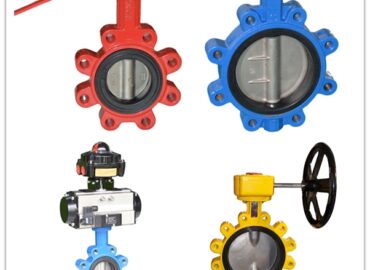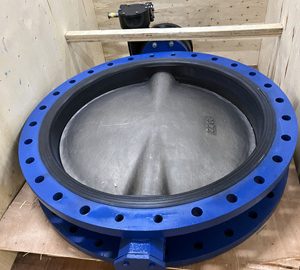In the complex world of fluid dynamics, Non-Slam Check Valve play a pivotal role. These unsung heroes of the industrial sector ensure the smooth and efficient flow of liquids or gases in a system, reducing the risk of backflow and water hammer. Understanding their types, functions, and applications is crucial for professionals in various industries including oil & gas, water treatment, and manufacturing. In this blog post, we will delve into the intricacies of Non-Slam Check Valve, shedding light on their structure, operation, and the numerous ways they contribute to the success of industrial processes. Whether you’re an engineer, a project manager, or just an enthusiast wanting to learn more about these essential components, this comprehensive guide will provide you with valuable insights.
Introduction
Non-Slam Check Valves are a specific type of check valve designed to eliminate the possibility of water hammer, a potentially damaging phenomenon that can occur in fluid systems when there is a sudden change in flow velocity. These valves are aptly named “non-slam” because they close before the reverse flow can begin, thus preventing the “slamming” effect that could otherwise occur. They come in various types to suit different applications, including swing check valves, lift check valves, and tilting disc check valves, each with its unique design and operation mechanism. Swing check valves, for instance, have a disc that swings on a hinge or trunnion, allowing flow in one direction and closing against a seat to block reverse flow. Lift check valves, on the other hand, employ a disc that lifts off its seat in response to forward flow and descends to block reverse flow. Tilting disc check valves use a disc that tilts to allow flow and shuts when the flow reverses. The choice of valve type depends on factors such as the nature of the fluid, flow rate, pressure, and the specifics of the application. Non-Slam Check Valves find wide usage across various industries. In the oil and gas sector, they help maintain the integrity of pipelines by preventing backflow. The water treatment industry uses them to ensure the smooth and efficient operation of pumping systems. In manufacturing setups, these valves contribute to safety and efficiency by regulating flow in various processes. By understanding the types, functions, and applications of Non-Slam Check Valves, professionals can make informed decisions to optimize their systems and prevent potential damage.
Brief overview of Non-Slam Check Valves.
Non-Slam Check Valve are specialized types of check valve designed to prevent the occurrence of water hammer, a phenomenon that can cause significant damage in fluid systems. Water hammer occurs when there’s a sudden shift in the velocity of the fluid, creating a shock wave within the system. Non-Slam Check Valve mitigate this by closing before any reverse flow can start, thereby preventing the slamming effect. These valves are essential components in various industrial and commercial applications where they control the direction of fluid flow, ensuring fluid moves in one direction only. They come in several types, each with its unique design and functionality, such as swing check valve, lift check valve, and tilting disc check valve. Despite their differences, all Non-Slam Check Valve share the common goal of safeguarding systems from the damaging effects of backflow and water hammer.
Importance of understanding Non-Slam Check Valves.
Understanding Non-Slam Check Valve is crucial for those involved in industries where fluid control systems are integral. These valves play a pivotal role in preventing backflow and the damaging effects of water hammer in a system, promoting efficiency and safety in operations. By comprehending the mechanics and functionality of different types of Non-Slam Check Valve, professionals can make informed decisions regarding their selection and application. This understanding can lead to optimized system performance, minimized downtime, and reduced maintenance costs. Furthermore, it can contribute to the overall lifespan of the system, as proper flow control reduces the risk of damage to other components. Hence, a solid grasp of Non-Slam Check Valve is not just beneficial, but essential for engineers, project managers, and other professionals working with fluid dynamics.
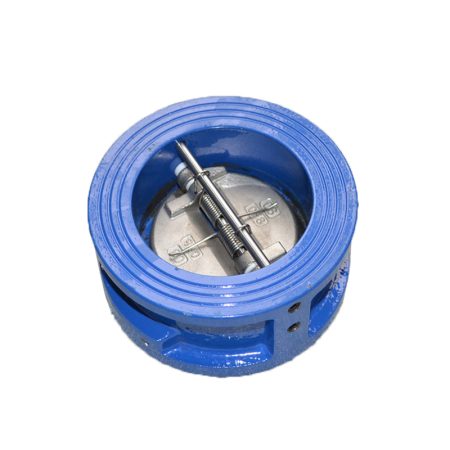
What are Non-Slam Check Valves?
Non-Slam Check Valve are a type of check valve that are specifically designed to prevent a phenomenon known as water hammer. Water hammer is a destructive force that can occur in fluid control systems when there’s a sudden change in the velocity of the fluid, creating a shock wave that can cause significant damage to the system. Non-Slam Check Valves are engineered to close before any reverse flow can start, effectively preventing the slamming effect associated with water hammer. These valves come in several forms, each with its own unique design and operation principles. For instance, Swing Check Valves have a disc that swings on a hinge or trunnion, allowing fluid to flow in one direction and blocking reverse flow by closing against a seat. Lift Check Valves work on a similar principle, with a disc that lifts off its seat when forward flow occurs and descends to block reverse flow. Tilting Disc Check Valves use a disc that tilts to allow flow and shuts when the flow reverses. These valves are used in various industries such as oil and gas, water treatment, and manufacturing, where they play a crucial role in maintaining the integrity of pipelines, ensuring smooth operation of pumping systems, and regulating flow in different processes. By understanding the design and function of Non-Slam Check Valves, it’s possible to optimize system performance, reduce maintenance costs, and prevent potential damage.
Detailed description of Non-Slam Check Valves.
Non-Slam Check Valves, as their name suggests, are designed to prevent a condition known as “slamming” which is typically associated with standard check valves. This slamming occurs when the valve closes abruptly, causing a pressure surge or water hammer that can potentially damage the system. Non-Slam Check Valves are engineered to close gradually, ensuring a smooth transition and avoiding the creation of a shock wave. These valves operate based on the flow conditions in the system, opening when the fluid flows in the forward direction and closing when it starts to reverse. The closing speed is controlled so that it occurs just before the reverse flow reaches the valve, thereby eliminating the possibility of water hammer. There are various types of Non-Slam Check Valves, including Swing Check Valves, Lift Check Valves, and Tilting Disc Check Valves, each having its unique design and operational characteristics. For instance, Swing Check Valves have a disc that swings on a hinge or trunnion, Lift Check Valves feature a disc that lifts off its seat during forward flow and descends to block reverse flow, while Tilting Disc Check Valves utilize a disc that tilts to allow flow and shuts when the flow reverses. These valves find extensive applications in industries such as oil and gas, water treatment, manufacturing, and more, where they help maintain system integrity, optimize performance, and reduce maintenance costs.
Components and structure of Non-Slam Check Valves.
Non-Slam Check Valves are comprised of several key components that collectively contribute to their functionality and performance. At the core of these valves is a disc or plate, which is the primary component responsible for controlling the flow of fluid. This disc is designed to move freely within the valve body under the influence of fluid flow. In conditions of forward flow, the fluid pressure pushes the disc off its seat, allowing the fluid to pass through. When the flow begins to reverse, the disc descends or swings back onto its seat, blocking the reverse flow. The disc’s movement is delicately calibrated to ensure it closes just before the reverse flow reaches the valve, thereby preventing water hammer. The seat of the valve, against which the disc rests in closed position, is another critical component. It is typically designed to provide a tight seal when the valve is closed. The valve body houses these internal components and connects the valve to the rest of the system. Depending on the specific type of Non-Slam Check Valve, there may be additional components such as hinges or trunnions (in Swing Check Valves) or a dashpot mechanism to control the closing speed of the disc. The structure and design of Non-Slam Check Valves aim to provide efficient and safe flow control, minimizing the risk of system damage due to water hammer.
Types of Non-Slam Check Valves
Non-Slam Check Valves come in various types, each designed with specific features to suit different applications. One such type is the Axial Check Valve, which is designed to allow fluid to flow in one direction and prevent reverse flow. This valve type is characterized by its axial flow design that enables a smooth, non-turbulent flow, contributing to its non-slam characteristic. Another type is the Nozzle Check Valve, which operates automatically and closes slowly before the pump stops, thereby preventing water hammer. Its short pattern design further reduces the closing time, enhancing its non-slam feature. The In-Line Piston Check Valve is another variety, known for its compact design and capability to operate in any orientation. It’s particularly effective in systems where space is limited. Venturi Check Valves are yet another type of Non-Slam Check Valves. They are typically used in high-pressure differential applications due to their ability to minimize pressure drop across the valve. Lastly, the Swing Check Valve, although not a non-slam valve by default, can be equipped with additional components like dashpots to control the closing speed of the disc and achieve a non-slam operation. All these types of Non-Slam Check Valves play a crucial role in various industries, offering solutions to prevent reverse flow and pressure surges, ensuring the efficient and safe operation of fluid control systems.
Explanation of the different types of Non-Slam Check Valves.
Non-Slam Check Valves come in various types, each specifically designed to cater to different applications and fluid dynamics. Here are a few notable types:
- Axial Check Valves: Named after the direction of the flow they regulate, Axial Check Valves are designed for non-turbulent, smooth flow. The valve opens under forward flow pressure and closes when the flow reverses, thereby preventing backflow or water hammer.
- Nozzle Check Valves: These are automatic valves that close slowly before the pump stops, which helps prevent water hammer. Their short pattern design reduces the closing time, further enhancing their non-slam feature.
- In-Line Piston Check Valves: Known for their compact design, these valves can operate in any orientation, making them ideal for systems where space is limited. They work by using a piston that moves within the valve body to either allow or prevent flow.
- Venturi Check Valves: These valves are often used in high-pressure differential applications due to their ability to minimize pressure drop across the valve. The venturi effect enhances the speed of the fluid through the valve, reducing the chances of backflow.
- Swing Check Valves with Dashpots: While swing check valves are not inherently non-slam, they can be equipped with dashpots – a type of hydraulic or mechanical damper – to control the closing speed of the disc and achieve a non-slam operation. This modification helps to prevent the sudden stoppage of flow, and thus, the water hammer effect.
Each of these types of Non-Slam Check Valves plays a crucial role in various industries, providing solutions to prevent reverse flow and pressure surges, ensuring the efficient and safe operation of fluid control systems.
Comparisons between different types: advantages and disadvantages.
Comparing different types of Non-Slam Check Valves, each has its unique advantages and disadvantages:
- Axial Check Valves: Advantages of these valves include their ability to provide non-turbulent, smooth flow, which reduces the potential for water hammer. They also typically have a lower pressure drop than other valve types. However, one disadvantage is that they can be more expensive due to their specialized design.
- Nozzle Check Valves: These are beneficial for their automatic operation and slow closing speed, which helps prevent water hammer. Their short pattern design also saves space. A disadvantage could be their limited suitability for low flow applications as the flow velocity might not be sufficient to fully open the valve.
- In-Line Piston Check Valves: Their compact design and ability to operate in any orientation make them ideal for systems where space is limited. However, they may not be suitable for high-velocity flow applications as the rapid movement of the piston could lead to wear and tear over time.
- Venturi Check Valves: Advantages include their suitability for high-pressure differential applications due to their ability to minimize pressure drop. They also enhance the speed of the fluid through the valve, reducing backflow. However, they may not be the best choice for low-pressure systems as the pressure might not be sufficient to fully utilize the venturi effect.
- Swing Check Valves with Dashpots: The addition of dashpots allows these valves to control the closing speed of the disc, achieving a non-slam operation. This makes them versatile and adaptable to various applications. However, the additional components may lead to increased maintenance requirements.
In conclusion, the choice of the right type of Non-Slam Check Valve depends on the specific requirements of the application, such as flow rates, pressure levels, space availability, and maintenance considerations.
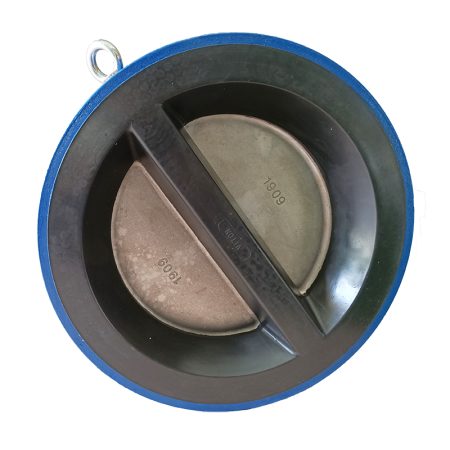
Functions of Non-Slam Check Valves
Non-Slam Check Valves perform several critical functions in fluid flow systems. Their fundamental role is to allow fluid to flow in one direction while preventing reverse flow, thereby protecting equipment or processes that are sensitive to backflow. This one-way operation is automatic, meaning the valve opens under forward flow pressure and closes when the flow reverses. Another primary function of Non-Slam Check Valves is the prevention of water hammer, a phenomenon that can cause significant damage to piping systems. Water hammer occurs when a fluid in motion is forced to stop abruptly, creating a pressure surge. Non-Slam Check Valves mitigate this by closing gradually before the pump stops, reducing the risk of sudden pressure surges. Additionally, certain types of Non-Slam Check Valves, like Venturi Check Valves, minimize pressure drop across the valve, enhancing the efficiency of the system. Some Non-Slam Check Valves, such as In-Line Piston Check Valves, are designed to operate in any orientation, providing flexibility in system design. Lastly, Swing Check Valves with dashpots can adjust the closing speed of the disc, allowing for a tailored response to different flow conditions. Overall, Non-Slam Check Valves play a vital role in ensuring the safe and efficient operation of various fluid control systems across multiple industries.
Explanation of how Non-Slam Check Valves work.
Non-Slam Check Valves are designed to control the direction of fluid flow in a system, allowing flow in one direction and preventing backflow. Their operation is automatic and based on the fluid pressure in the system. When the fluid pressure in the upstream direction (towards the valve) is greater than the downstream side, the valve opens, allowing fluid to pass through. As the fluid flows, it pushes against a disc or a piston inside the valve, moving it from a closed position to an open position. This movement creates a path for the fluid to flow in the desired direction. However, when the fluid pressure drops or reverses – as can happen when a pump stops or fails – the disc or piston is pushed back into its original position, closing the valve and preventing backflow. What makes Non-Slam Check Valves unique is their design to close gradually, minimizing the risk of water hammer – a damaging pressure surge that can occur when a valve slams shut abruptly. By controlling the speed at which the valve closes, Non-Slam Check Valves effectively mitigate the impact of sudden pressure changes, protecting the system and ensuring efficient operation.
Functionality and role of Non-Slam Check Valves in different systems.
Non-Slam Check Valves play a pivotal role in various systems where fluid flow control is essential. Their primary function is to allow fluid to flow in one direction and prevent backflow when the pressure drops or reverses – a feature that is crucial in systems like water supply networks, oil refineries, and chemical plants. By preventing backflow, these valves protect sensitive components downstream and maintain the efficiency and safety of the system. In addition to this, Non-Slam Check Valves are specially designed to close gradually, thereby reducing the risk of water hammer – a potentially damaging phenomenon caused by sudden pressure surges. This feature makes them particularly useful in high-velocity flow applications, such as pump and compressor systems, where the sudden stoppage of flow can lead to water hammer. Moreover, certain types of Non-Slam Check Valves are designed to operate in any orientation, providing flexibility in system design and making them suitable for various applications, including HVAC systems, steam lines, and process industries. Hence, Non-Slam Check Valves are integral to the smooth and safe operation of a wide range of systems across different sectors.
-450x450.jpg)
Applications of Non-Slam Check Valves
Non-Slam Check Valves have versatile applications across various industries due to their unique ability to prevent backflow and mitigate water hammer. In water supply and wastewater treatment facilities, these valves are used to prevent the reverse flow of water, thereby safeguarding the system against potential contamination and ensuring a consistent supply. In oil and gas industries, Non-Slam Check Valves are crucial in maintaining unidirectional flow in pipelines, protecting sensitive equipment from damage due to sudden changes in flow direction or pressure. They are also commonly used in pump and compressor systems, where they prevent the reverse flow of fluid when the pump or compressor shuts down, reducing the risk of damaging pressure surges or water hammer. In power generation plants, including nuclear facilities, these valves ensure the safe operation of cooling systems by preventing the reverse flow of coolant. Additionally, in HVAC systems, Non-Slam Check Valves are used to control the direction of coolant flow, contributing to the efficiency and effectiveness of the system. They are also found in fire protection systems, where they prevent the backflow of potentially contaminated water into the clean water supply. Moreover, in chemical and pharmaceutical industries, these valves play a vital role in process control, ensuring that highly reactive or hazardous substances flow in the correct direction at all times. Thus, Non-Slam Check Valves are fundamental components in a wide array of applications, providing essential protection and enhancing operational efficiency.
Overview of the industries and sectors where Non-Slam Check Valves are used.
Non-Slam Check Valves are used across a wide range of industries and sectors due to their unique ability to prevent backflow and reduce the risk of water hammer. In the water and wastewater sector, these valves are integral in maintaining the unidirectional flow of water, ensuring a consistent supply and preventing system contamination. They are also widely used in the oil and gas industry, where they protect sensitive equipment by maintaining steady flow direction in pipelines and reducing sudden pressure changes. The power generation industry, including nuclear facilities, relies on Non-Slam Check Valves for the safe operation of cooling systems, preventing the reverse flow of coolant. Within HVAC systems, these valves control the direction of coolant flow, enhancing system efficiency. Fire protection systems also utilize these valves to prevent the backflow of potentially contaminated water into the fresh water supply. Furthermore, in the chemical and pharmaceutical industries, Non-Slam Check Valves play a crucial role in process control, ensuring that highly reactive or hazardous substances are directed appropriately. Therefore, Non-Slam Check Valves serve as fundamental components in an array of sectors, enhancing operational safety and efficiency.
Real-life examples and case studies of Non-Slam Check Valves applications.
Non-Slam Check Valves have numerous real-life applications across various industries, and several case studies illustrate their effectiveness. For instance, a case study presented by DFT Inc. discusses the use of these valves in fluid management, highlighting their role in mitigating water hammer, facilitating maintenance, and enabling efficient inspection processes. Another example can be found in a resource by Campbell-Sevey, which compares non-slam check valves with swing check valves and discusses their unique uses. A video on YouTube illustrates how to model and mitigate valve slam using software tools, demonstrating the superior performance of Non-Slam Check Valves in preventing such issues. In addition, Triangle Fluid highlights the benefits of replacing a swing check valve with a non-slam check valve, emphasizing the elimination of backflow. Furthermore, a mathematical analysis and review published on Springer provide examples of how installing non-slam check valves, such as axial types, can effectively calculate and mitigate water hammering. These examples underscore the critical role of Non-Slam Check Valves in ensuring safe and efficient fluid flow in different applications.
Key Factors to Consider When Choosing Non-Slam Check Valves
When choosing Non-Slam Check Valves, several key factors should be taken into account to ensure optimal functionality and performance. Firstly, it’s crucial to consider the application requirements including the fluid type, flow rate, and pressure conditions. The valve should be compatible with the fluid type, whether it’s gas, liquid, or a mixture of both, and able to withstand the operating pressure and temperature ranges. Another critical factor is the valve size and connection type, which should align with the pipeline specifications to ensure a proper fit. Material selection is also essential, as the valve should be constructed from materials resistant to the fluid’s corrosive or erosive properties. For example, stainless steel might be suitable for most applications due to its corrosion resistance, while brass or bronze may be more appropriate in certain specific environments. Additionally, the valve’s opening and closing speed should be considered to prevent water hammer, a phenomenon that can cause significant damage to the system. The durability and maintenance requirements of the valve are also important considerations. High-quality valves are typically more durable and require less frequent maintenance, resulting in lower long-term costs. Lastly, the cost-effectiveness of the valve should be evaluated. While initial purchase cost is important, total cost of ownership, which includes installation, operation, maintenance, and replacement costs, should be the primary consideration. Therefore, selecting the right Non-Slam Check Valve requires a comprehensive evaluation of these factors to ensure it meets the specific needs of the application, provides reliable performance, and offers the best value over its lifecycle.
Guide on what to look for when selecting Non-Slam Check Valves.
When selecting Non-Slam Check Valves, it’s important to consider several factors to ensure you choose the right valve for your specific application. One of the first things you should look at is the valve’s pressure and temperature ratings. These must match or exceed the maximum pressure and temperature of your system to ensure safe operation. The type of fluid being transported is another crucial factor. The valve must be compatible with the fluid, whether it’s water, oil, gas, or a corrosive chemical. Material is also key – the valve should be made from materials that can withstand the operating conditions without corroding or degrading. Another aspect to consider is the valve size and end connection type, which should align with your piping system. The valve’s flow direction is another point to check, as Non-Slam Check Valves are designed to allow flow in one direction only. You should also look at the valve’s opening and closing speed to prevent water hammer, a common issue that can cause significant damage to the system. The durability and ease of maintenance of the valve are other important considerations. Lastly, while cost is always a factor, it’s essential to consider the total cost of ownership, including installation, operation, maintenance, and potential replacement costs, rather than just the initial purchase price. By taking all these factors into account, you can select a Non-Slam Check Valve that meets your specific needs and provides reliable and efficient operation over its lifespan.
Tips on maintenance and operation for longevity and optimal performance.
Maintenance and operation are key to ensuring the longevity and optimal performance of any device, including Non-Slam Check Valves. Regular inspection is the first step in maintaining these valves. This involves checking for leaks, wear and tear, or any signs of corrosion. Any issues identified should be addressed promptly to prevent further damage. It’s also crucial to clean the valves regularly to remove any debris that could obstruct the fluid flow and affect the valve’s performance. When operating the valve, make sure to follow the manufacturer’s instructions. Incorrect operation can lead to premature wear and tear or even damage the valve. Lubrication is another important aspect of maintenance. Regularly lubricating the moving parts of the valve can help reduce friction, prevent wear, and extend the valve’s lifespan. Additionally, when not in use, valves should be stored in a dry and clean environment to prevent rust and corrosion. Finally, it’s recommended to keep a record of all maintenance activities. This can help you track the valve’s condition over time, predict potential issues, and plan preventive maintenance accordingly. By following these tips, you can help ensure the longevity and optimal performance of your Non-Slam Check Valves.

Conclusion
In conclusion, understanding Non-Slam Check Valves, their types, functions, and applications, is crucial for anyone involved in the design, operation, or maintenance of fluid systems. These valves serve a critical role in controlling fluid flow and preventing backflow, thus protecting your system from potential damage.
There are various types of Non-Slam Check Valves available, each with its unique design and functionality. It’s essential to understand the differences among them so you can choose the right valve that best suits your specific needs. Some marine valves may be more suitable for certain applications than others due to their flow characteristics, pressure ratings, and material construction.
The function of these valves is also an important aspect to understand. Non-Slam Check Valves are designed to allow fluid flow in one direction only and close quickly when the flow reverses, thus preventing water hammer—a common issue that can cause significant damage to your system.
As for applications, Non-Slam Check Valves are used in a wide range of industries, from oil and gas to water treatment, chemical processing, and more. Their ability to withstand harsh operating conditions, combined with their reliable performance, makes them an invaluable component in these systems.
Choosing the right Non-Slam Check Valve requires careful consideration of several factors, including the type of fluid, operating pressure and temperature, material compatibility, valve size, and connection type. But the selection process doesn’t end there. Proper installation, operation, and maintenance are just as important to ensure the valve’s longevity and optimal performance.
Remember, while the initial cost of the valve is a factor, the total cost of ownership should be the primary consideration. A high-quality valve may have a higher upfront cost, but it can save you money in the long run by reducing maintenance costs and minimizing downtime.
By gaining a thorough understanding of Non-Slam Check Valves, you can make informed decisions that will contribute to the efficiency, safety, and longevity of your fluid systems. So, whether you’re a system designer, operator, or maintenance personnel, it pays to know your Non-Slam Check Valves.
Recap of the importance, types, functions, and applications of Non-Slam Check Valves.
To recap, Non-Slam Check Valves are essential components in a wide range of industrial applications due to their role in controlling fluid flow and preventing backflow. There are several types of these valves, each with its unique design and functionality, making it suitable for specific applications. Understanding these types and their functions can aid in selecting the right valve for your needs. Non-Slam Check Valves are designed to allow fluid flow in one direction and close quickly when the flow reverses, thus preventing water hammer—a common issue that can cause significant damage. Their applications span across various industries, including oil and gas, water treatment, chemical processing, and more. By considering factors such as the type of fluid, operating pressure and temperature, material compatibility, valve size, and connection type, you can select a Non-Slam Check Valve that not only meets your specific requirements but also enhances the efficiency and safety of your system.


